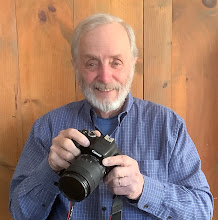Back in the early 1970s, I got a small taste of police profiling long before it had even been named.
I was into being contrary; but because I had a family to support, I couldn’t afford to “drop out”. I worked as an illustrator for a large corporation and chose to express my individuality in my personal style within the confines of the business environment.
I grew shoulder-length hair and a generous beard. A shirt and tie were the appropriate attire for work, so I wore colored shirts with wide flowered and paisley ties. Flared-leg pants were in fashion, and I had many pairs. In short, I was pushing the limits of business acceptability – being a thorn in the side of many of my conservative coworkers. I was a good illustrator, so I got away with it.
The most outward expression of my individuality was my car. I drove a 1967 Volvo Duett, which resembled a 1940s panel truck in ¾ scale. The car was in immaculate condition with shiny dark blue paint, bright orange wheels and oversized tires, brightly-colored floral curtains in the windows and a loud exhaust system. It made a statement.
That statement came at a cost, however. I was repeatedly stopped by the police for all kinds of insignificant reasons. The most common was a few miles per hour over the speed limit.
The routine was always the same:
“Do you know why I stopped you? Can I see your license and registration? Where are you going?”
If my wife was with me: “Who is that woman?” If the kids were along, “Are these your children?”
Then: “I’ll be right back.”
After a few minutes, the officer would return with my license, registration and recommendations: “I’m not giving you a written warning this time (for what?) Everything seems in order, but make sure to take it easy on this road.”
I got used to it for the five years I drove the car. It seemed like the cost for my individuality.
I cut my hair some and replaced the car in 1976 with a non-descript blue Mazda sedan. It dawned on me a year later that I hadn’t been stopped by the police.
That’s insignificant to what young black men endure in 2021 all the time. I was never in danger of being beaten or even murdered. I was a pain in the ass, but my skin was the right color.
I'm just a gigolo...
-
OK. The truth be told, I guess I was a gigolo at one time.
I wasn't trying to be. But a woman I had sex with paid me for my time. It
started cuz I missed w...


